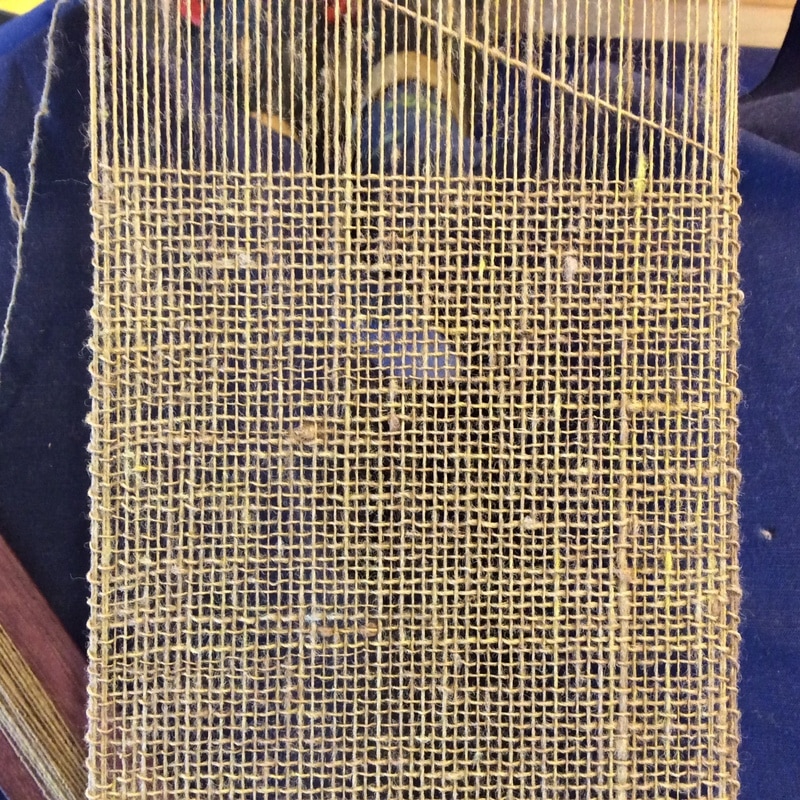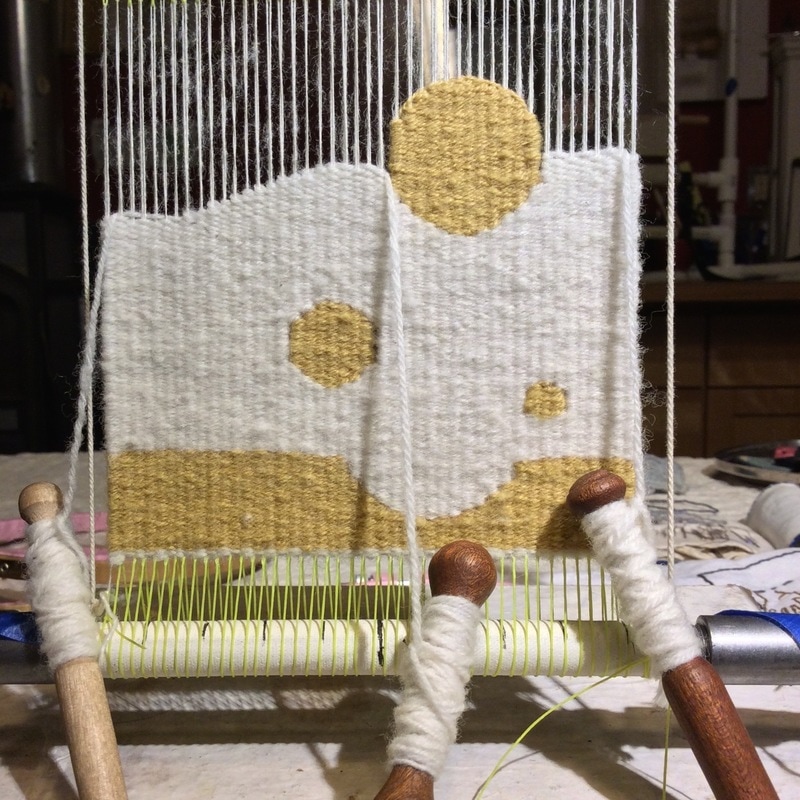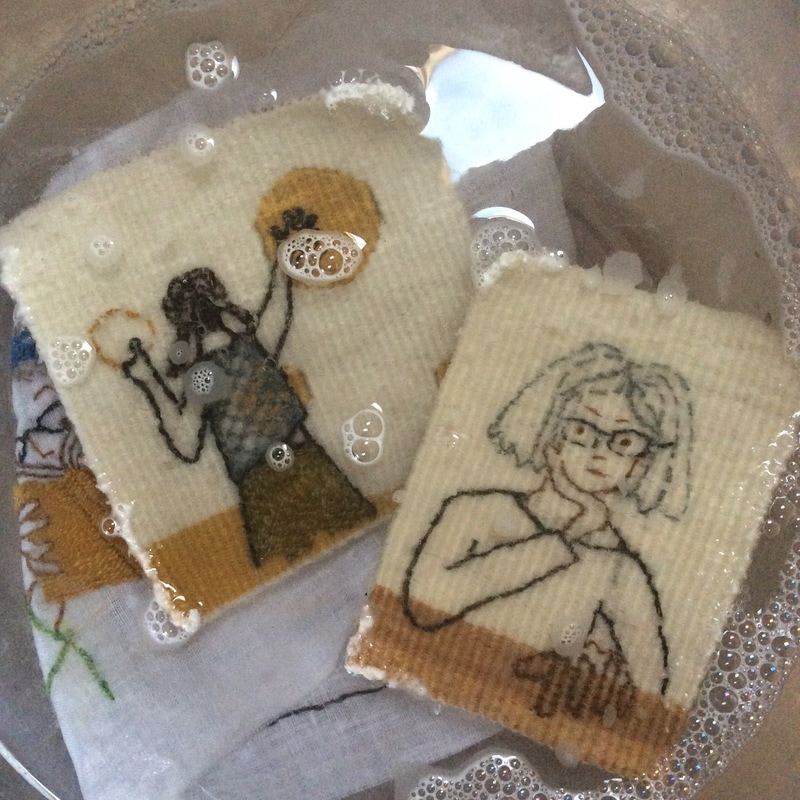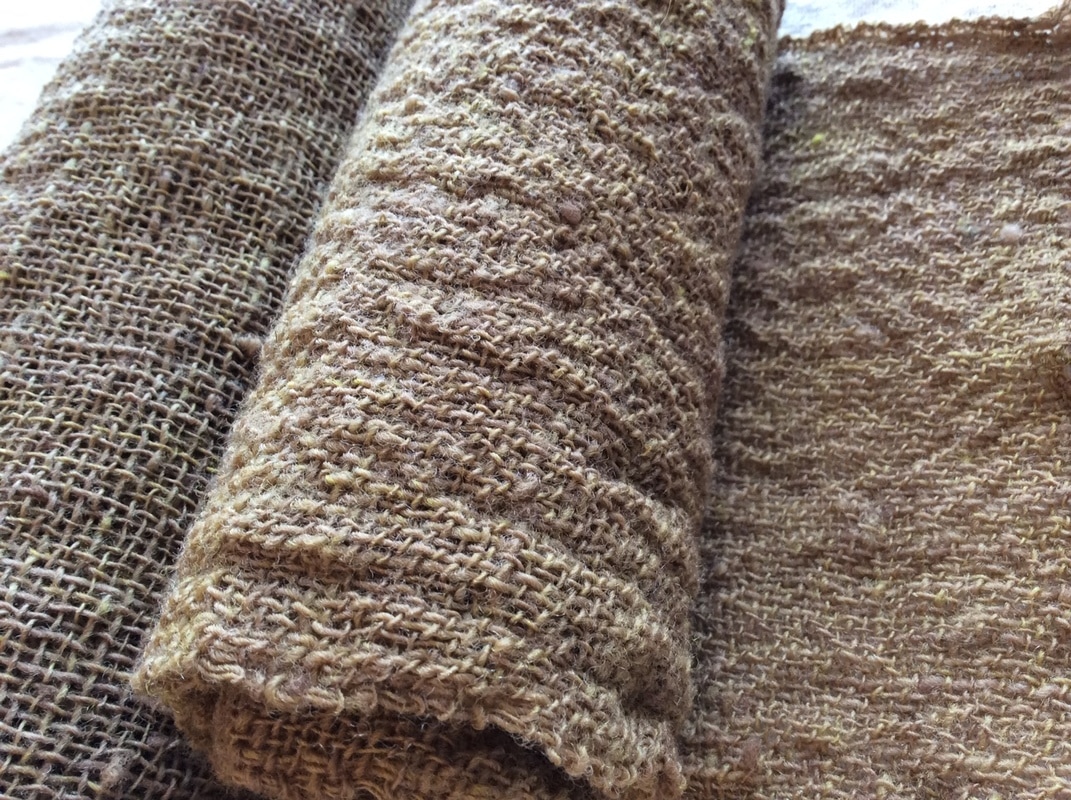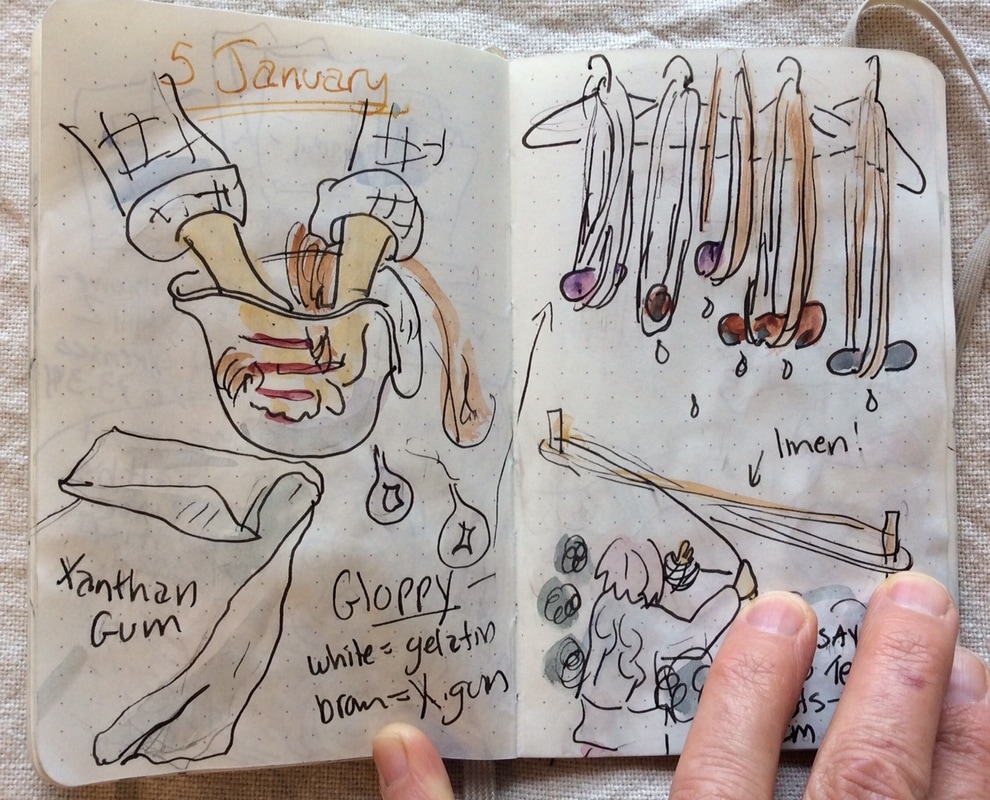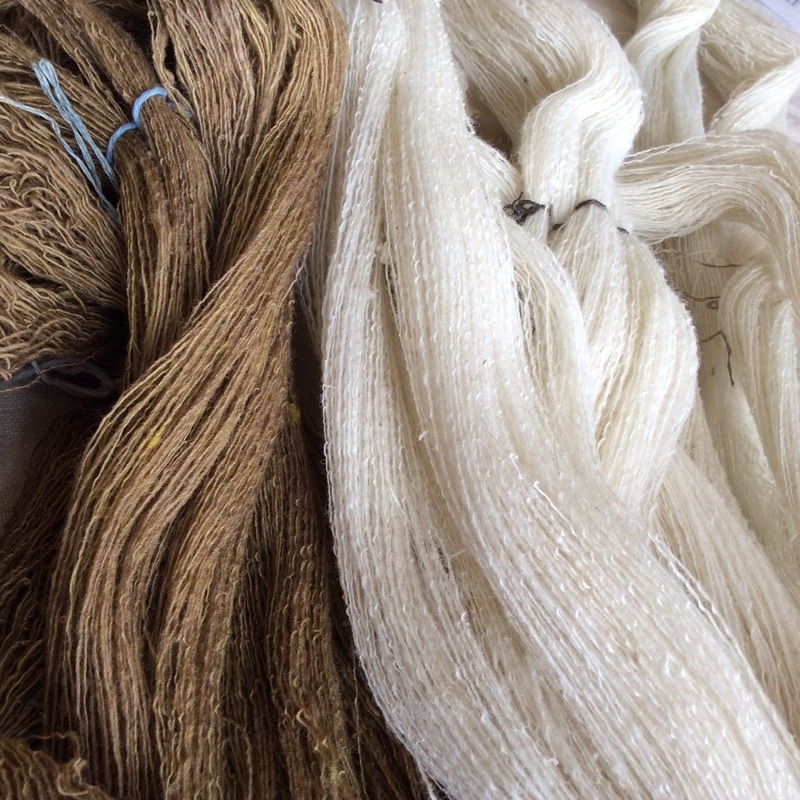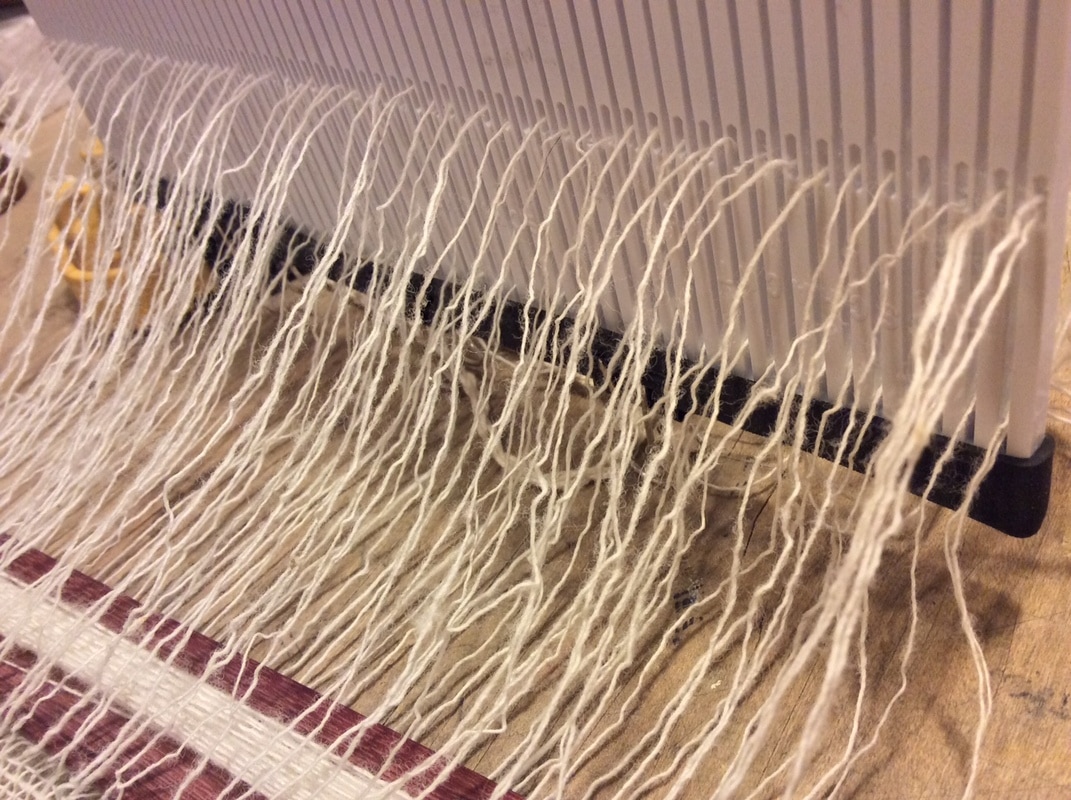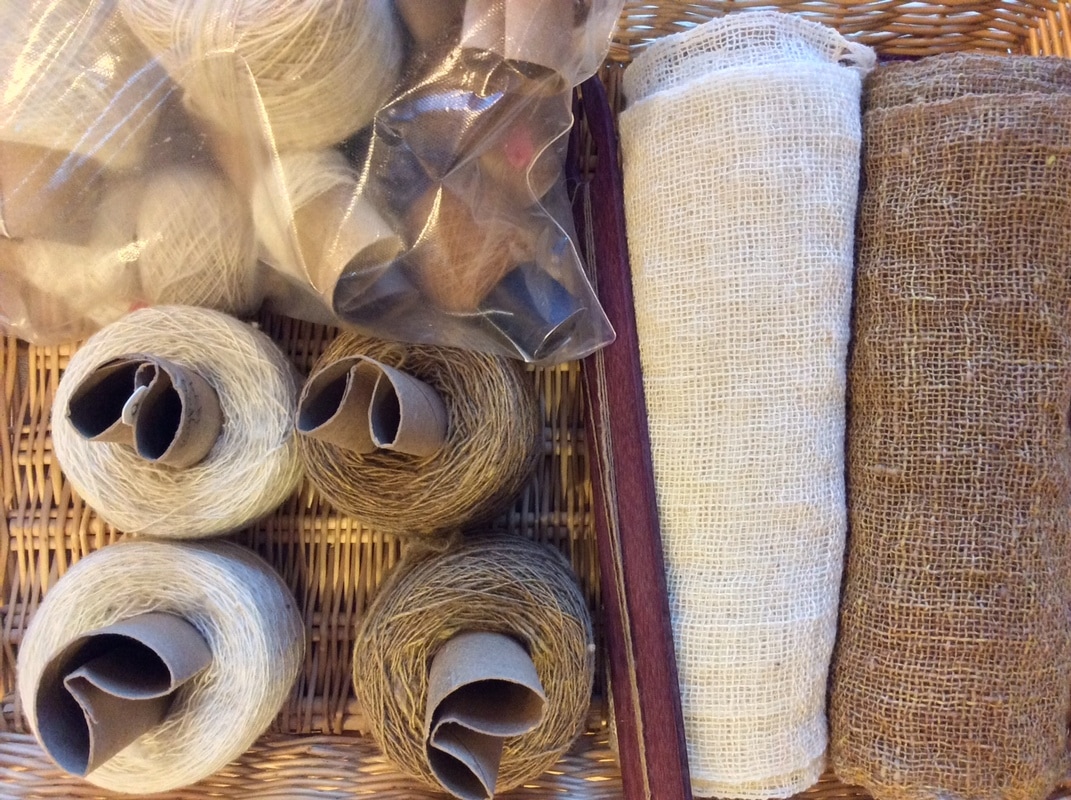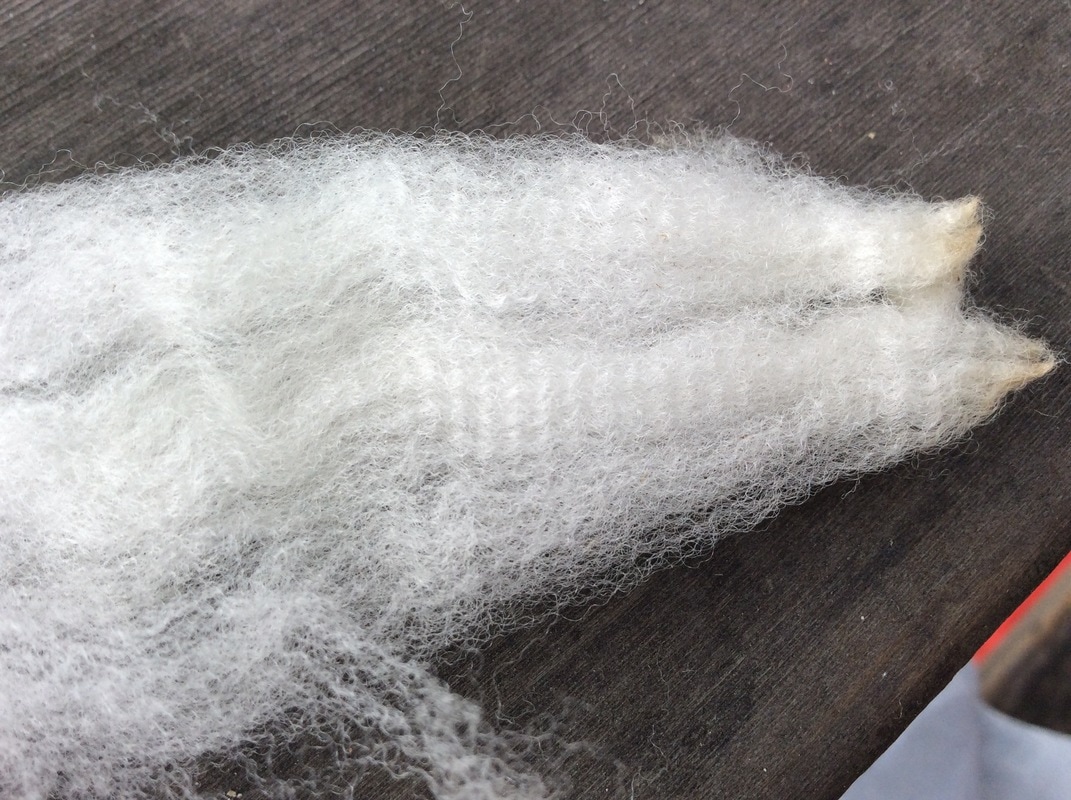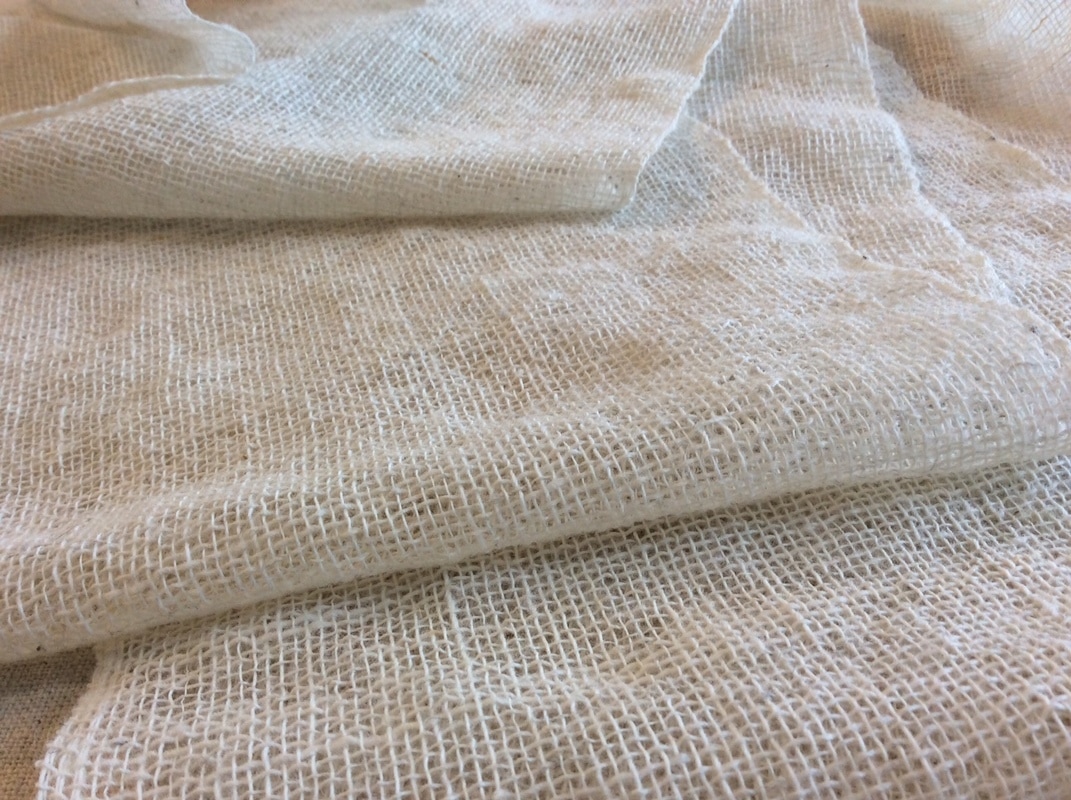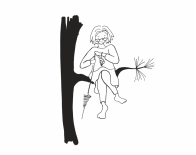is that what you weave is what you get:
the work on the loom looks pretty much as it does when it is done.
At least this is the case with my tapestries.**
Even wet finishing (total immersion in warm soapy water), doesn't change the images, though it does improve the hand and drape of the cloth.
**If using some weft faced techniques, wedge weave for instance, tapestry fabric will distort when cut from the loom; Connie Lippert and Alex Friedman use this technique to great advantage.
In this phase, I much preferred the gelatin. It dissolved easily in a small amount of cool water, then became nicely liquid when further diluted with hot. I immersed the skeins, squeezed the solution through, then hung them to drip.
note: I'd used gelatin before, immersing dry rather than damp yarn; this time i found, unsurprisingly, that the yarn absorbed less gelatin solution. More on this later.
The Xanthan gum (I used the recipe in Sarah Anderson's wonderful book, A Spinner's Guide to Yarn Design was not so straightforward. It probably would have been easier if I had followed Sarah's recommendation to use a blender to mix the Xanthan gum with the water though. Not having a blender, I tried a whisk and ended up with a gloppy, lumpy solution a bit like egg drop soup. I finally pushed it through a sieve which got rid of some of the lumps, but the consistency (which Sarah had described), continued to be, well, gloppy.
This meant that it needed to be worked into the yarn with more vigor than the gelatin and, once hung, that it took forever to dry. It also meant that it didn't pool in the yarn as much as as the gelatin, which is a plus (I had to turn the gelatin skeins more often.)
This stiffness is something I'd liked with earlier gelatin experiments as it made the yarn easy to manage, especially when threading heddles, so I was a little disappointed by the lack of stiffness in the xanthan gum skeins. Perhaps I needed to spend more time working it into the yarn?
Or perhaps it would be possible to warm up the xanthan gum slightly and make it more liquid which might make it go more easily into the yarn? I don't really know what it is though, so maybe heat will make it do something else entirely. I'm a big fan of gluten (my husband and son are bakers), so don't have much call for such things to hold my bread together. Anyone know anything about this?
I also found the gelatin sized yarn less stiff than with the earlier gelatin experiments when I had immersed dry yarn into the solution. Next time: Dry yarn.
In short: sizing can be helpful, but the yarn needs to be up to the task.
Gosh, it always comes back to yarn, doesn't it?
